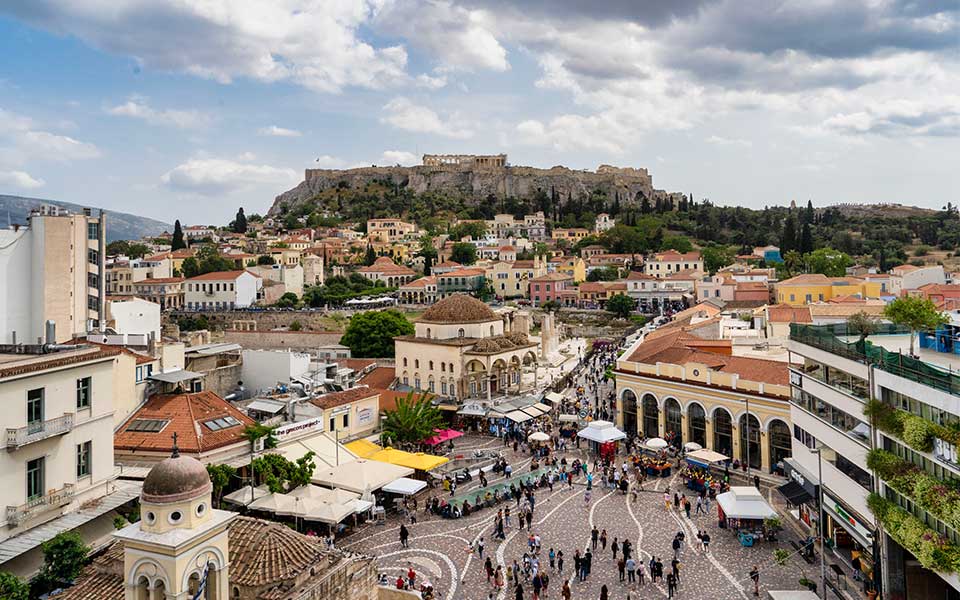Athens is a city steeped in history and culture, where ancient ruins stand proudly alongside vibrant modernity. While it’s true that Athens offers a wealth of iconic attractions, you don’t need a hefty budget to experience the heart and soul of this enchanting city. From exploring ancient landmarks to strolling through picturesque neighborhoods, Athens generously offers a multitude of free activities that allow you to immerse yourself in its unique charm without breaking the bank.
In this guide, we’ll take you on a journey through the best free things to do in Athens, ensuring that you make the most of your visit while keeping your wallet happy.
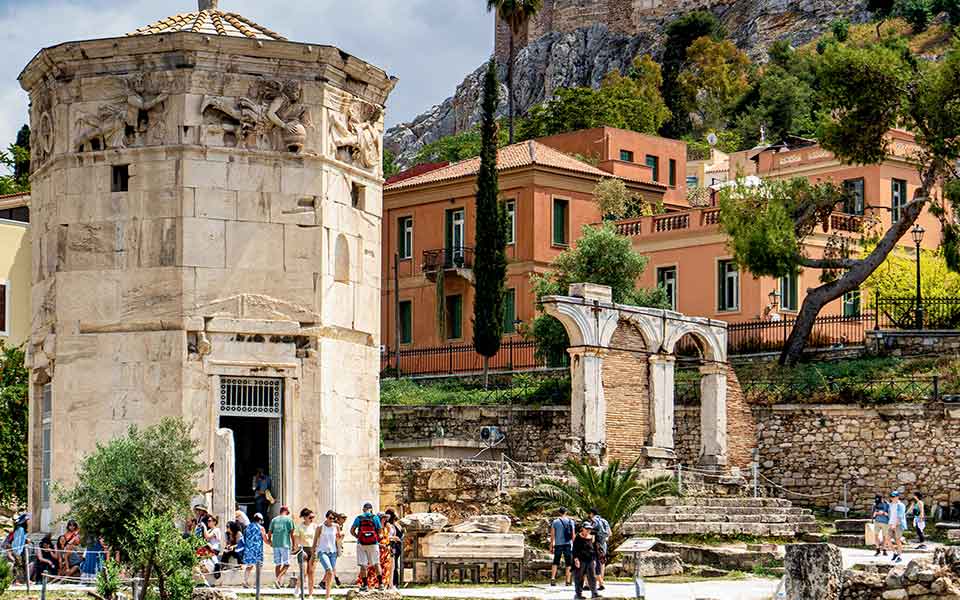
© Perikles Merakos
Free Walking Tours
Athens is a wonderful city to explore on foot, with several pedestrianized areas in the historic center (e.g., Ermou Street and Dionysiou Areopagitou). It is quite hilly, but many of the main cultural landmarks and attractions are centrally located, and within easy walking distance of the commercial heart that runs between Syntagma Square and Monastiraki. To get the most out of this experience, why not join a knowledgeable local guide and go on a free guided walking tour?
There are several organizations that offer free guided walking tours of Athens throughout the year, each one lasting between two to three hours. Accompanied by a well-versed local who is keen to show off the true character of the city and its inhabitants, visitors can explore picturesque neighborhoods and discover hidden treasures off the beaten path, while listening to fascinating anecdotes about the many layers of the city’s history and culture.
Here are some of the groups currently running free walking tours of the city:
If you have the energy, and you’re looking to escape the urban hustle, why not hike up the Lycabettus or Filopappou Hill? These walks will reward you with the most spectacular views of the city, the Saronic Gulf, and nearby islands.
Another great option is to explore the hiking trails on Ardittos Hill and the site of the Panathenaic Stadium, known locally as the “Kallimarmaro,” the world’s only all-marble stadium and the only one to host three Olympics (one ancient, two modern). Built in 144 AD and refurbished to host the first modern Games in 1896, visitors can enter the stadium from the back, providing access to the running track around the rim of the terrace and the free public gym. As you would expect, the top of the stadium boasts incredible views of the surrounding city.

© Dimitris Tsoumplekas
Local Street Art
Athens boasts one of the most vibrant street art scenes in Europe, with colorful and creative murals adorning many of its downtown neighborhoods. In recent years, renowned street artists from around the world have flocked to Athens to add their own murals and graffiti to the city’s streets, celebrating both Greek and international culture.
One of the best places to explore local street art in Athens is the central district of Exarchia, known for its edgy urban vibe and independent spirit. At first glance, Exarchia feels like a giant open-air galley, full of striking murals, political graffiti, and provocative artwork. The walls here often serve as canvases for social and political commentary. Likewise, in the historic neighborhoods of Psyrri, Monastiraki, and Kerameikos, street artists express themselves in colorful murals, offering insight into the city’s ever-changing urban culture.
Another place to discover new and temporary street art installations is Technopolis, a former gasworks turned cultural center in Gazi. Technopolis frequently hosts street art festivals and events throughout the year. Click here for more information.
If you’re keen to go deeper, “This is Athens with a Local” offers a free 2-hour tour of the city’s street art. Click here for more information.
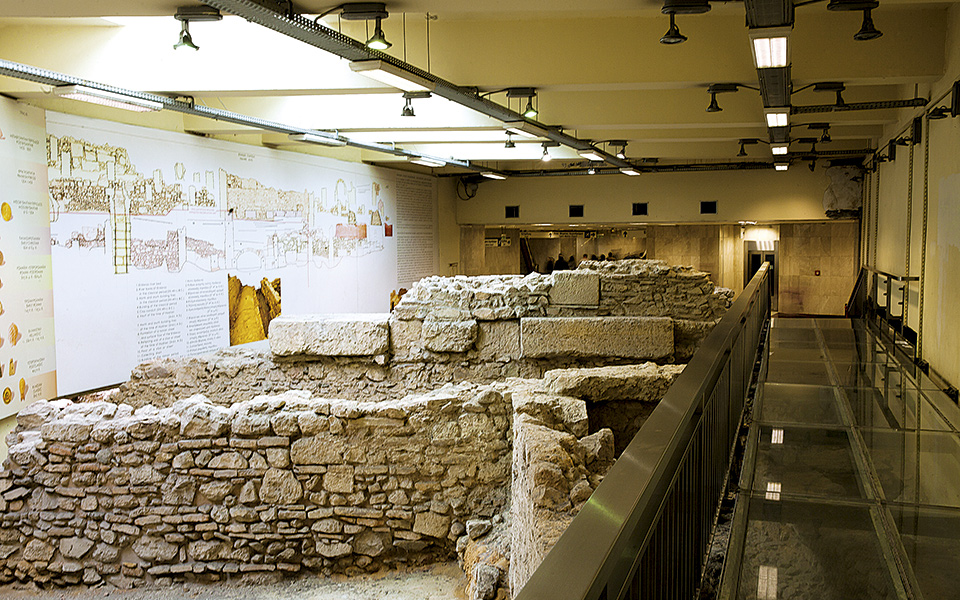
© Dimitris Vlaikos
Archaeology in the Metro Stations
Athens is one of the oldest continuously inhabited cities in the world (from the 5th-4th millennium BC). As such, its urban fabric is a palimpsest of human activity; layer upon layer of buildings, roads, and civic infrastructure.
While most of the museums in Athens require a modest entry fee, you can still view some of the city’s most impressive archaeological finds, many still in situ, and totally for free, at eight of its Metro stations: Acropoli, Dafni, Egaleo, Eleonas, Evangelismos, Monastiraki, Penepistimiou, and Syntagma.
The construction of the metro system took place between 1993 and 2000, in preparation of the 2004 Olympic Games, facilitating the largest program of archaeological excavation ever undertaken in Greece. Around 50,000 ancient artifacts were unearthed during the construction project, including ceramic vessels, clay water pipes, wells, funerary structures, and building foundations, some stretching back to the 3rd millennium BC. Instead of moving all the artifacts to nearby museums, a cross section of objects remained in situ, on public display behind specially designed glass walls and cabinets.
One of the most impressive displays can be seen on the concourse level at Acropoli, the station for the Acropolis, which includes a reproduction of the Parthenon Sculptures now on display in the British Museum. Another impressive display can be found at Monastiraki, including the foundations of residential buildings, workshops, graves, and the remains of an ancient sewer.
For more information about the archaeology at the various Athens Metro Stations, click here.
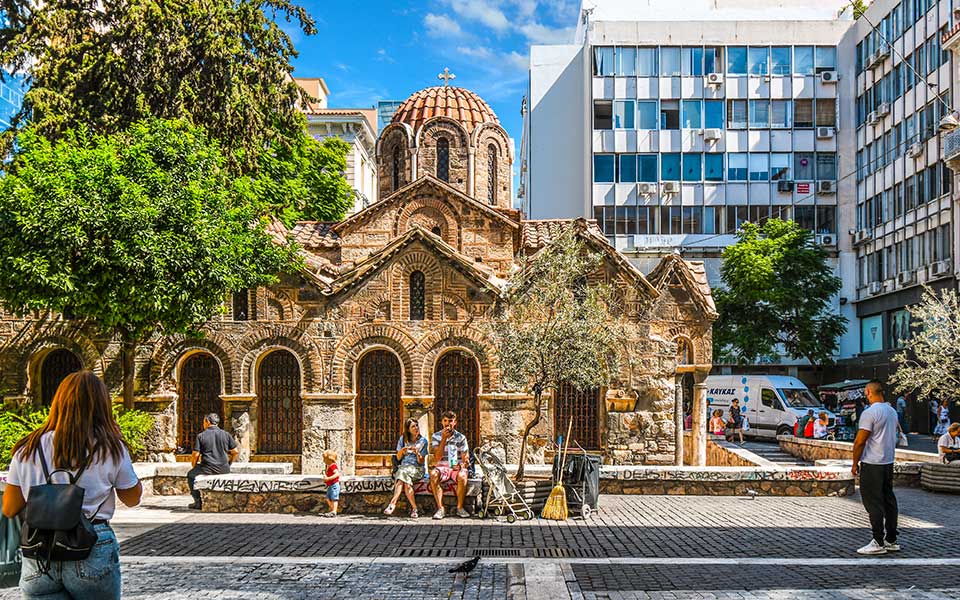
© Shutterstock
Byzantine Churches
The Greek capital boasts some of the oldest and most architecturally significant churches in the Orthodox world, showcasing the legacy of Athens’ Byzantine past.
The city is renowned for its churches from the Middle Byzantine period, dating to the 11th and 12th centuries. These are noted for their diminutive size, elaborate brickwork, and red-tiled, eight-sided domes (“Athenian Domes”). Despite centuries of invasion and foreign occupation by Franks, Venetians and Turks, a handful of these Byzantine-era churches, built in the Athenian style, still exist in the city.
One of the most famous of these is the Church of Panagia Kapnikarea, an iconic Athenian landmark located in the heart of Ermou Street. Constructed around 1050 AD, it was built over the ruins of an ancient temple dedicated to the worship of goddess Athena. Another is the Church of Panagia Pantanassa, on Monastiraki Square. Built in the 10th century and used as a monastery during the Frankish period, much of the original church building lies below ground level. A third, the Church of Agios Dimitrios Loumbardiaris, is situated at the foot of Philopappou Hill, in peaceful wooded surrounds. This small Byzantine chapel of the 12th century was miraculously saved from destruction in 1648, when a Turkish commander attempted to blow it up with a large cannon ball (“loumbarda”), fired from the Acropolis.
Many are open to the public during different times of the day. Visitors are invited to escape the urban hustle by going inside to view the beautiful wall frescoes and light a candle.
To learn more about the Byzantine churches of Athens, click here.
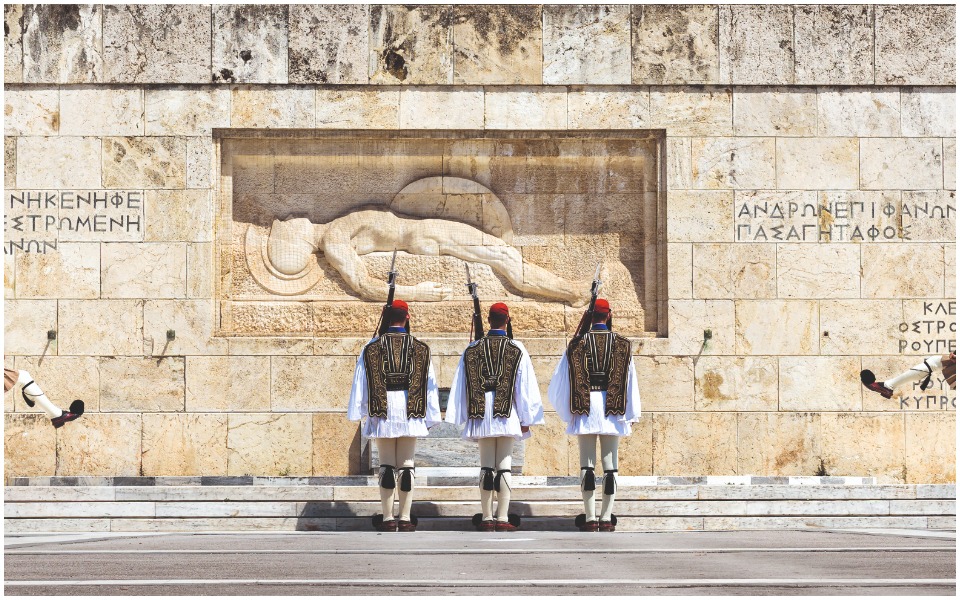
© Shutterstock
The Tomb of the Unknown Soldier
If you’re in the commercial heart of Athens, you should definitely pay a visit to the Tomb of the Unknown Soldier, located in front of the Old Royal Palace on Syntagma Square. Inaugurated in 1932, the Tomb serves as a war memorial, dedicated to all Greek servicemen and women killed in war. An eternal flame can be seen burning in the center of the cenotaph. Here you can watch the world-famous changing of the guard by the Evzones, the elite Presidential Guard.
The Evzones, renowned for their distinctive uniform and precise drills, guard the Tomb around the clock. Clad in traditional fustanella skirts (a pleated, kilt-like garment), red tsarouchia shoes, and white shirts, they perform intricate changing of the guard ceremonies every hour on the hour, 24 times a day. The ceremony is especially grand on Sundays at 11am, when it includes a much larger contingent of guards and an accompanying band.
You can also find a pair of Evzones guarding the Presidential Mansion, the official residence of the president of the Hellenic Republic, on Herodou Attikou Street.
For more on the Evzones, click here.
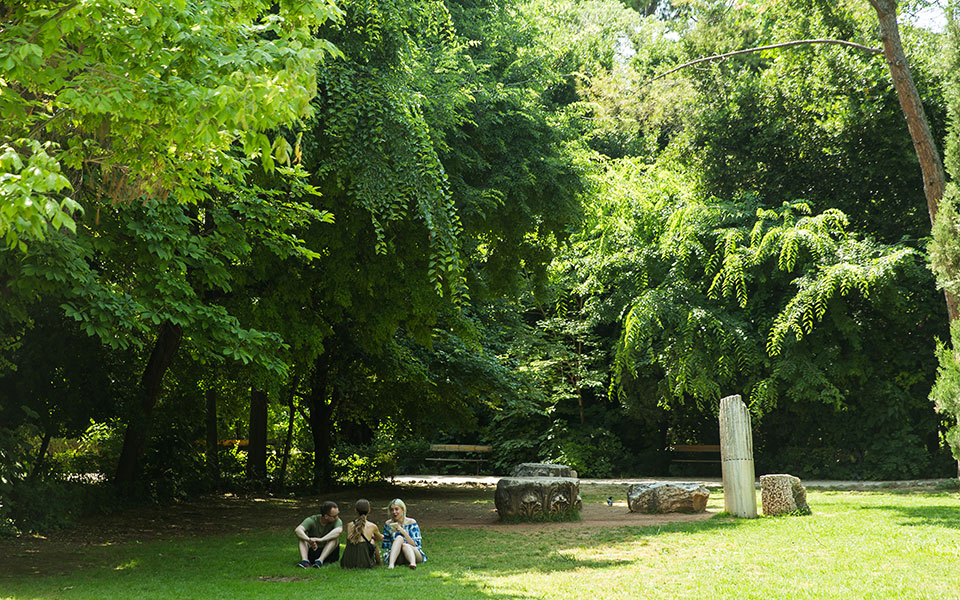
© Dimitris Vlaikos
The National Garden
A tranquil escape from the bustling city, the National Garden, located directly behind the Greek Parliament building (the Old Palace), offers a serene oasis rich in history, lush greenery, and natural beauty.
Strolling along its shaded, winding paths, you’ll encounter a diverse collection of plants and trees, some of which are centuries old, including palm trees, cypress groves, and fragrant rose gardens.
Commissioned by Queen Amalia in 1838, the National Garden is a favorite spot for locals and tourists alike, seeking peaceful solitude, a quiet place to read, or a shady place to enjoy a picnic. The neoclassical Zappeion Hall and the graceful sundial of Andronicus of Cyrrhus, dating back to 50 BC, are notable architectural features within the park.
One of the Garden’s highlights is the small zoo, housing various animals and birds, delighting children and animal enthusiasts. There’s also a picturesque duck pond with charming bridges and benches, inviting visitors to pause and enjoy the scenery.
For more on the history of the National Garden, click here.
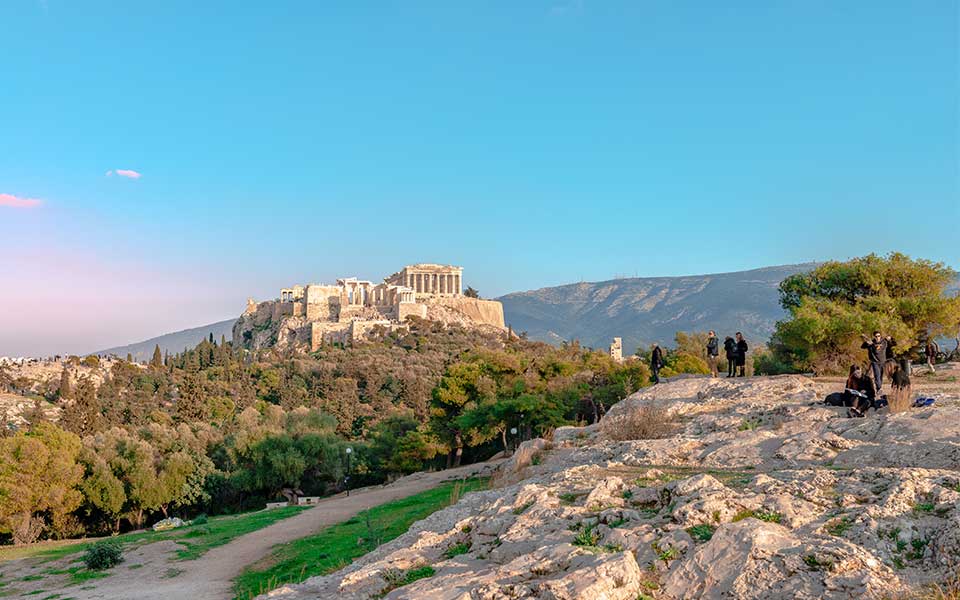
© Shutterstock
The Pnyx – Birthplace of Democracy
Nestled on a small, rocky hill less than one kilometer west of the Acropolis, the Pnyx served as the primary gathering place for Athenian citizens from 507 BC. Here they practiced direct democracy and engaged in crucial civic discussions, laying the foundation for democratic governance as we know it today. Open to the public, a visit to the Pynx today is to step back in time to one of the most historically significant and symbolic sites of ancient Greece.
The Pnyx was an open-air assembly area with stone seats carved into the hillside, offering panoramic views of Athens below. Theoretically, all of the city’s male citizens had the right to speak. Walking across the outcrop and taking in the spectacular views, it’s easy to imagine the passionate debates and speeches that once echoed here, as great orators like Pericles addressed the Athenian “ekklesia” (assembly). You can even see the remains of the speaker’s platform.
Today, the Pnyx is a peaceful and contemplative spot, often visited by history enthusiasts and tourists seeking to connect with Athens’ democratic heritage. It’s an especially good place to come at sunset.
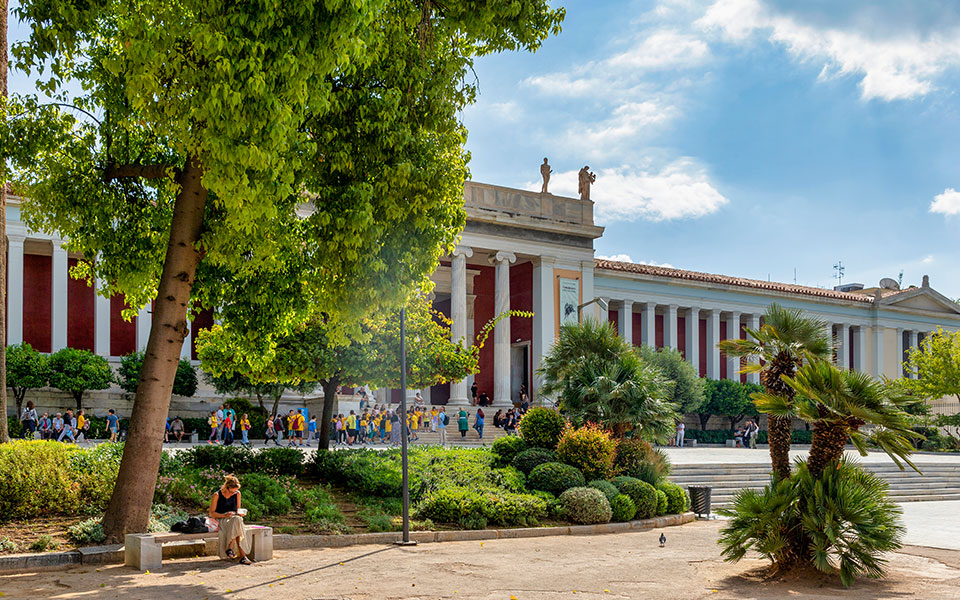
© Perikles Merakos
Free Open Days at the City’s Museums and Archaeological Sites
The cost of admission to the majority of Athens’ museums and archaeological sites won’t break the bank, but if your budget is super tight, and you time your visit just right, you may be able to gain access free of charge.
On the first Sunday of each month from November 1 to March 31, admission to archaeological sites, monuments and museums owned by the State and managed by the Greek Ministry of Culture and Sports is free of charge for all visitors, including the Acropolis. In addition, these sites are open to the public for free on March 6 (in memory of Melina Mercouri), April 18 (International Monuments Day), May 18 (International Museums Day), the last weekend of September (European Heritage Days), and October 28 (Ohi Day).
In addition to State-run sites and museums, several private museums in Athens opens their doors to the public free of charge on different days. The renowned Benaki Museum of Greek Culture offers free admission to all visitors every Thursday, while the National Historical and Ethnological Museum, housed in Greece’s former parliament building, is free of charge on Sundays.
Free Athenian museums include the Museum of Greek Folk Instruments, the Hellenic Children’s Museum, and the Greek Film Archive & Museum of Cinematography. Also, keep your eyes peeled for free festivals, workshops, and music events at Technolopolis, the former gasworks-turned-cultural landmark in Gazi.
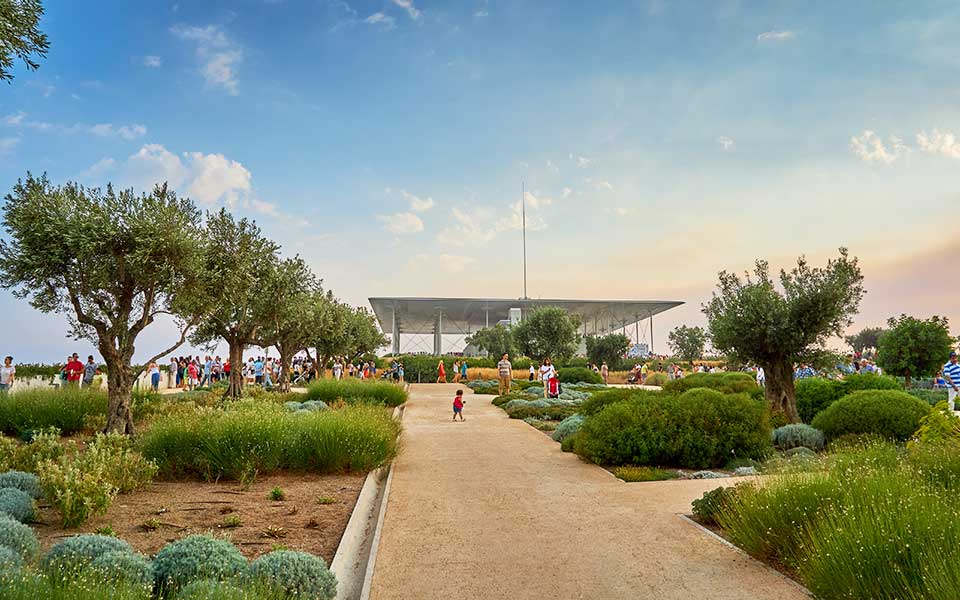
© Shutterstock
The Stavros Niarchos Foundation Cultural Center
If you’re keen to escape the city center and head south along the Athenian Riviera, be sure to book a free tour of the Stavros Niarchos Foundation Cultural Center (SNFCC) in Kallithea, one of the city’s newest cultural and recreational hubs.
Designed by award-winning Italian architect, Renzo Piano, the SNFCC is a state-of-art HQ for the Greek National Opera and the National Library of Greece. Set within a beautiful landscaped park, peppered with playgrounds and art installations, and a 400m seawater canal, the Center is a beacon for sustainability – the first European public structure of its scale to earn the coveted Leadership in Energy and Environmental Design (LEED) Platinum certification.
The SNFCC hosts a series of free events throughout the year, inlcuding everything from concerts, outdoor movie screening and festivals to sporting activities, chess and garden clubs.
For more information, click here.
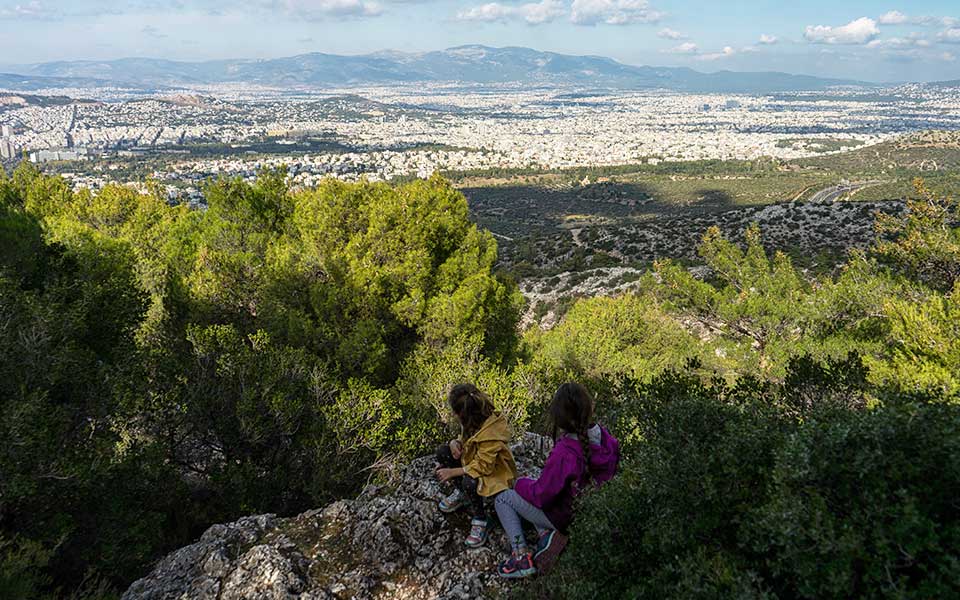
© Marika Tsouderou
Hiking on Mount Ymittos
A popular escape for city dwellers, Mount Ymittos offers a network of hiking trails, boasting spectacular views of the city and the Saronic Gulf. From the city center, it takes less than an hour to reach its slopes.
Click here for our walking guide.
Street Milonga
Argentine tango is hugely popular in Greece, with open-air milongas and practices taking place all over the capital from September till June. Sometimes events reschedule their time or date, or change location on a one-off basis. It’s always a good idea to confirm before heading to an event.
Every Monday night, from 22.30-02.30, “Street Milonga” by Giorgos Minadakis, takes place at the end of Ermou Street (near the Kerameikos Metro station). Free of charge and open to all levels, this event has its own page on Facebook.
For a list of all the tango milongas and practices taking place in Athens, click here.

